Efficient DIY Laser Engraving with the ultraArm P340
About the project
You will know at a glance that a robotic arm is used for laser engraving! Let's try it!
Project info
Items used in this project
Story
Before beginning, please ensure that you have taken appropriate safety measures, such as protective eyewear for laser operations, fire extinguishers, and a well-ventilated area.
IntroductionWith the continuous advancement of technology, laser engraving technology has become an indispensable part of today's manufacturing industry. Known for its high precision, efficiency, and wide adaptability to materials, it demonstrates unique advantages in numerous fields. This article delves into the working principles of laser engraving and how precision in engraving paths is achieved using a four-axis all-metal roboticarm. We will thoroughly analyze the emission principles of the laser head, the interaction between the laser and materials, and how the roboticarm achieves precise control through stepper motors, in conjunction with advanced path planning software, to accomplish fine engraving from simple patterns to complex designs. Whether for industrial production or personal maker projects, the application of laser engraving technology showcases limitless possibilities. Next, let us unveil the mysteries of laser engraving technology and explore its innovative applications in conjunction with roboticarms.
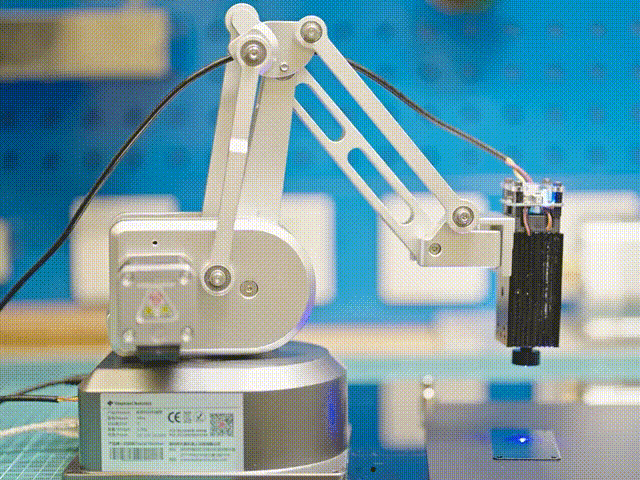
The ultraArm P340, developed by Elephant Robotics, is a high-performance desktop robot arm designed specifically for education and automation fields. It features a compact metal structure, occupying only the space of an A5 sheet of paper. Equipped with efficient stepper motors, the ultraArm P340 boasts a repeat positioning accuracy of ±0.1mm and high stability. As a 4-axis collaborative robot, it is capable of performing various tasks such as engraving, painting, and gripping, making it suitable for a wide range of applications. The robot arm is equipped with an Arduino-compatible Mega2560 control board and has a working radius of 340mm. It can be fitted with different attachments to meet various functional requirements. These characteristics make the ultraArm P340 a versatile robotic solution for both educational and practical applications.
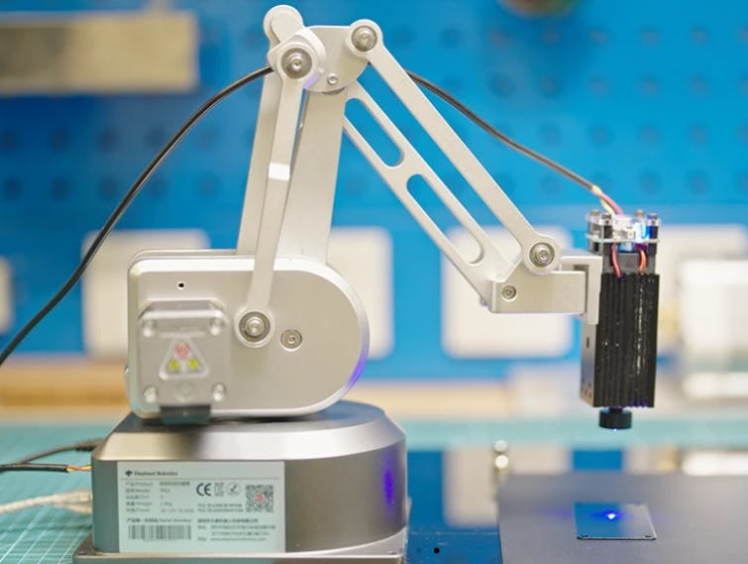
Laser engraving is a technique that uses a high-energy laser beam to engrave the surface of materials. The laser beam, generated by a laser device, is precisely directed onto the material's surface. It utilizes high thermal energy to rapidly vaporize or melt the material locally, thereby leaving permanent markings or patterns on the surface. Compared to traditional roboticengraving methods, laser engraving offers advantages such as non-contact processing, high precision, fast speeds, and strong adaptability.
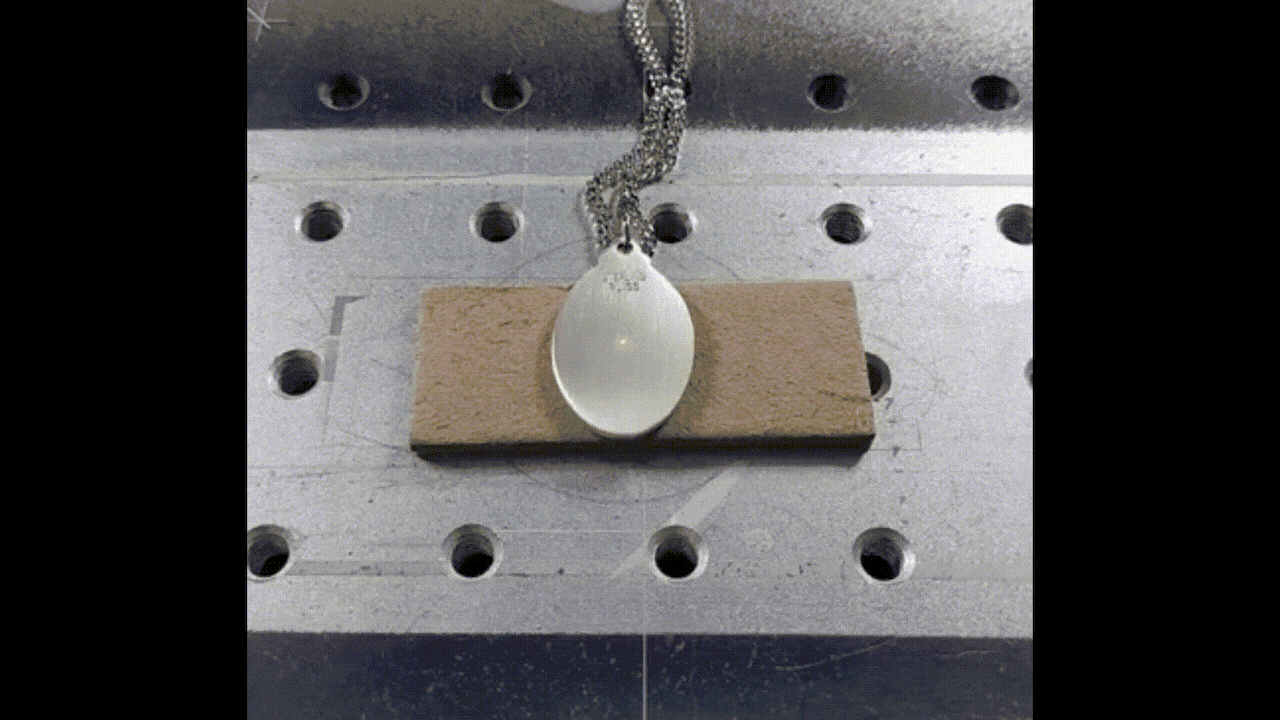
Currently, common laser sources used in laser engraving machines include CO₂, fiber, ultraviolet, green light, and diode sources. These sources have different laser wavelengths, resulting in significant differences in engraving efficiency.
The laser engraving machine we are using today is a CO₂ laser engraver, which is primarily used for engraving non-metallic materials such as wood, leather, and plastic.
Principles of Laser EngravingThis is a video of a large CO₂ laser engraving machine demonstrating the entire operational process, which can help understand how laser engraving works.
The working principle of a CO₂ laser engraving machine mainly involves:
1. Laser Generation: In a CO₂ laser engraver, the laser is produced by exciting a gas mixture containing carbon dioxide. This mixture often also includes nitrogen, helium, and/or xenon. When an electric current passes through this gas mixture, it excites CO₂ molecules, generating laser light.
2. Laser Amplification and Focusing: The generated laser is amplified and focused through a specially designed mirror and optical system. By focusing the laser, its energy is concentrated on a very small point, achieving high energy density.
3. Material Processing: The focused laser beam is directed onto the material's surface. Due to the high energy of the laser, the material at the point of laser contact rapidly heats up, causing the material to melt, vaporize, or be removed by chemical decomposition, thereby achieving cutting or engraving.
4. Control System: Laser engravers are usually equipped with a computer control system that can precisely control the position, movement speed, and power of the laser beam. This allows users to design complex patterns or text as needed and accurately engrave or cut them on the material.
5. Cooling System: As the laser generates heat during operation, a cooling system is needed to maintain a suitable working temperature for the laser, ensuring the stability and efficiency of the machine.
PWM (Pulse Width Modulation) is used to control the output power of the laser. This technique controls the power by adjusting the duration of the laser emission. It can be clearly seen from the image that the higher the percentage of PWM, the deeper the engraving effect produced.
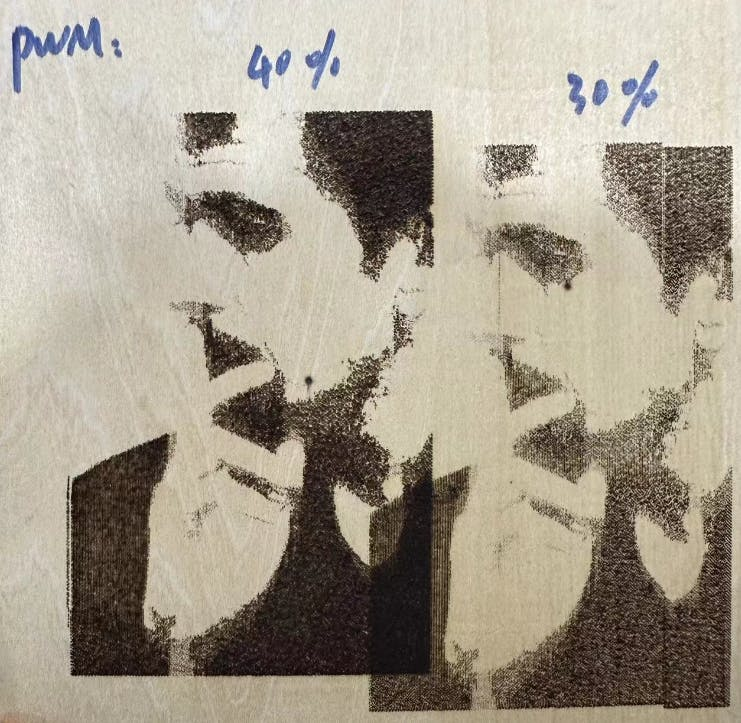
CO₂ laser engraving machines are very common, and we use this one.
1 / 3
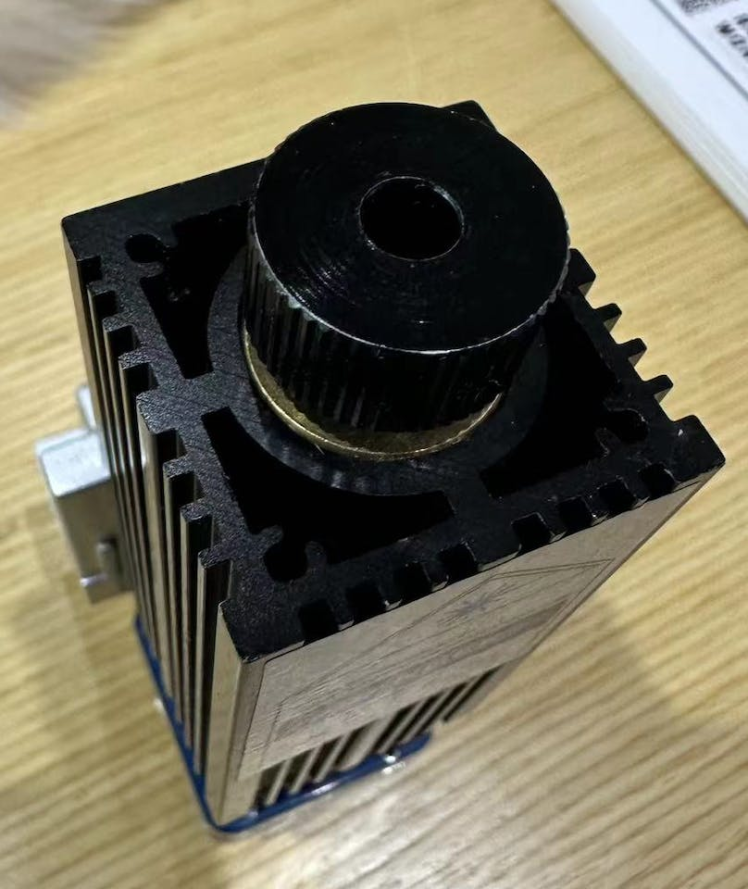
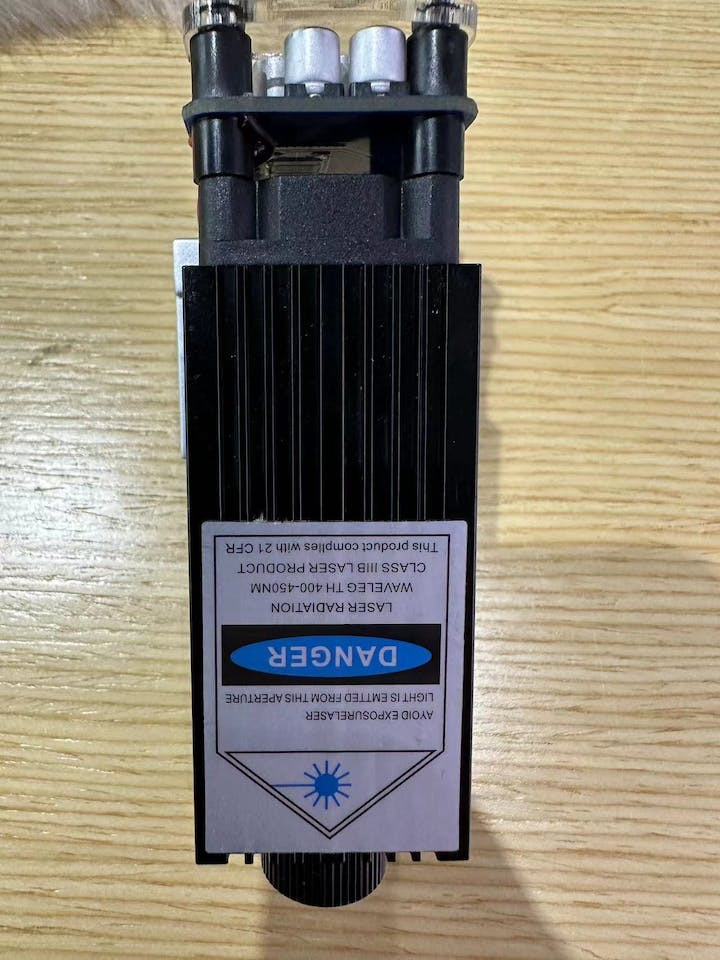
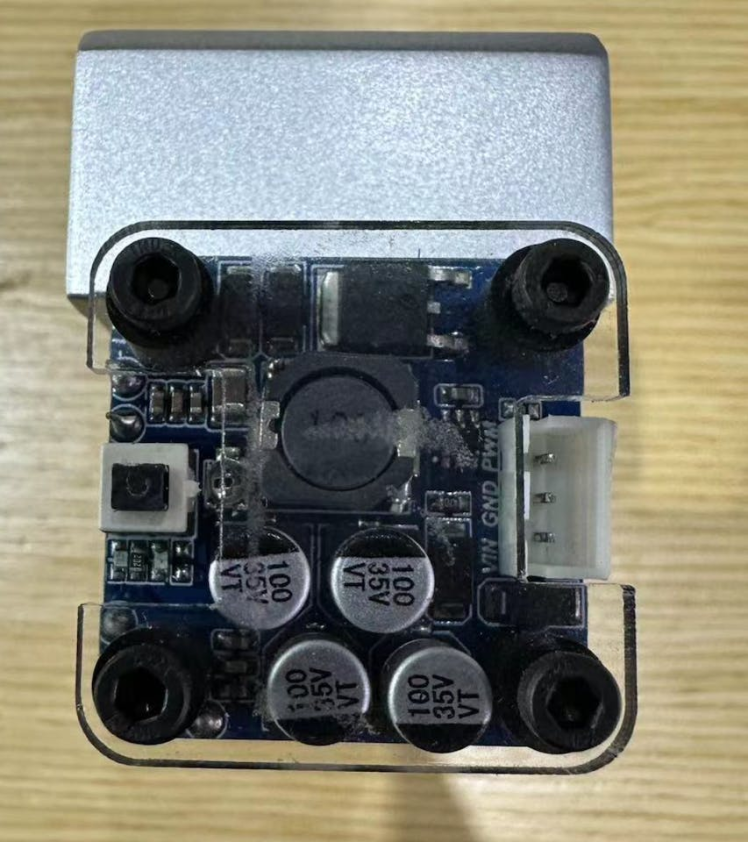
This type of engraving machine is very convenient as it can be controlled through an IO interface and can be mounted at the end of the UltraArm.
Mounted at the End of the Robotic Arm
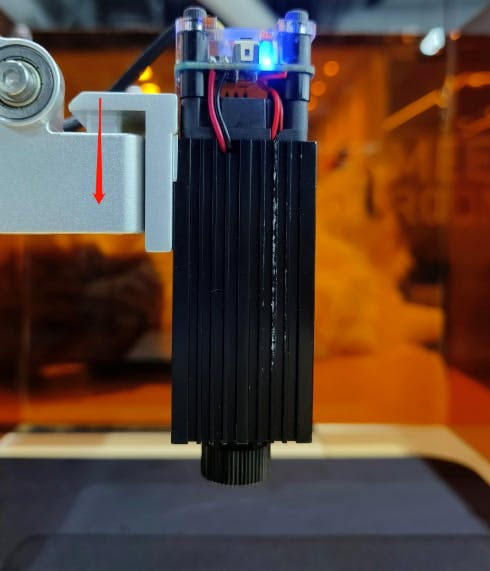
Mounted at the End of the Robotic Arm
Connected to the Robotic Arm's IO Interface
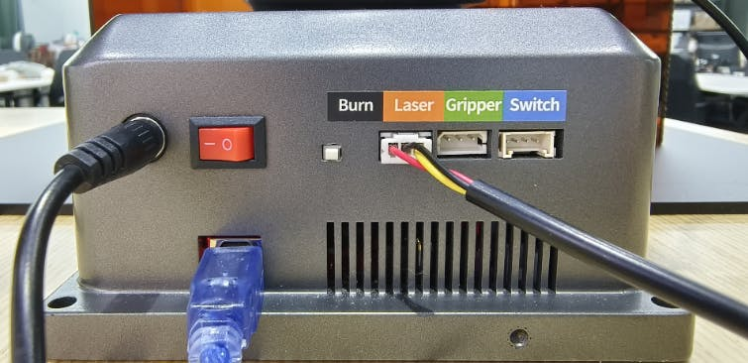
Connected to the Robotic Arm's IO Interface
Use of an Aluminum Alloy Plate
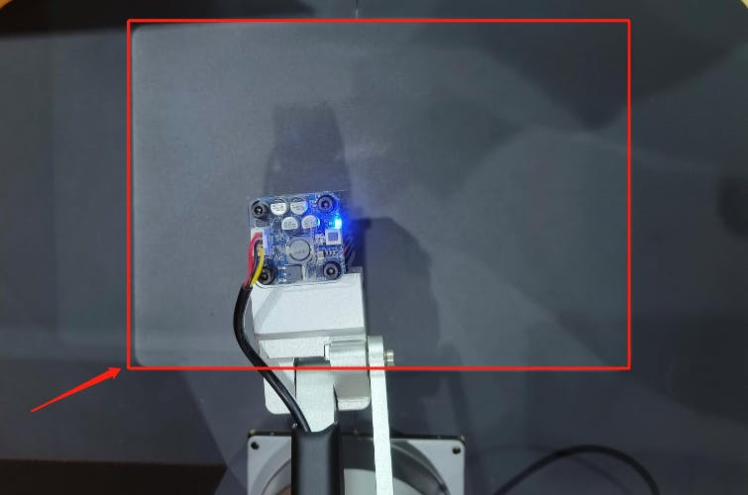
Use of an Aluminum Alloy Plate
The next crucial step involves the robotics arm following the path of the desired pattern. This is an essential part of the laser engraving process, where the control system plays a key role. By accurately tracing the pattern's path, the mechanical arm can execute custom engraving, demonstrating the combined capabilities of the mechanical arm and the laser engraving system.
Elephant Luban - operating systemElephant Luban is a software that integrates the writing, drawing, and laser engraving functions of the ultraArm P340. On Luban, one can create graphics and utilize the drawing and engraving functions of the robotic arm.
Luban Interface
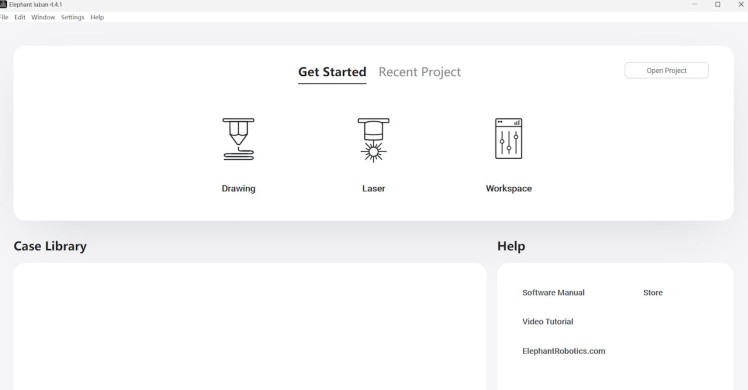
Luban Interface
Image ProcessingTo design graphics within the working radius of the robotic arm, Luban is a software specifically tailored for ultraArm. The white area represents the range that the robotic arm can reach, so the design of the pattern must be done within this white area.
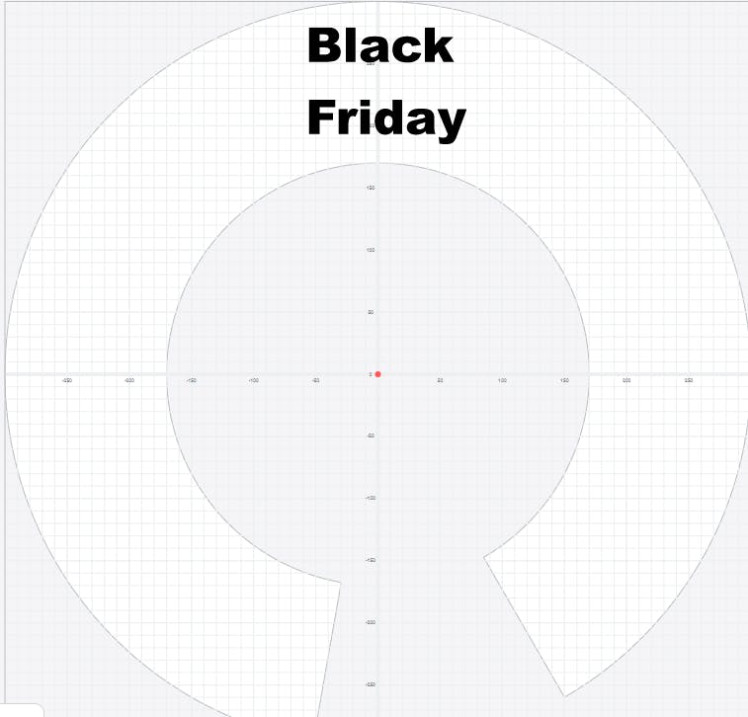
The target image undergoes rasterization, converting it into a path/instruction that the robotic arm can understand, typically in the form of G-code files.
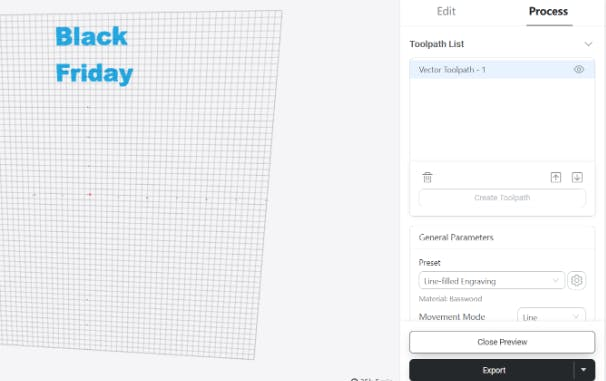
When generating G-Code files, an algorithm is used to design the most suitable path planning for the robotic arm. Here, the Traveling Salesman Problem (TSP) algorithm is utilized.
TSP: The goal of this algorithm is to find a path that allows a traveling salesman to visit a series of cities once each and then return to the starting city, while ensuring the total distance or cost of the journey is minimized. For example, consider four cities labeled 0, 1, 2, and 3, with the cost of traveling between them as shown in the diagram:
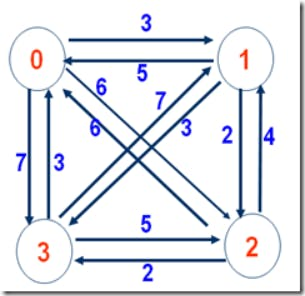
Optimal Solution: 0->1->2->3->0 = 10
Similarly, by analyzing the graphic, the most efficient engraving path is determined to minimize movement time and improve efficiency. The generated G-code, as shown below, is sent to the robotic arm for execution.
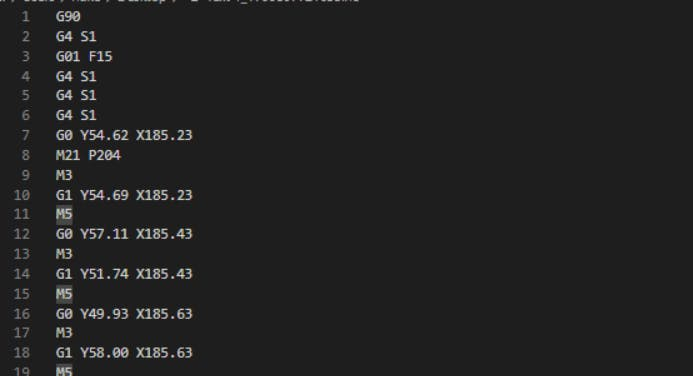
Imported into the workspace, one can preview the trajectory of the robotic arm's movement (represented by grey lines), as well as the expected result of the laser engraving.
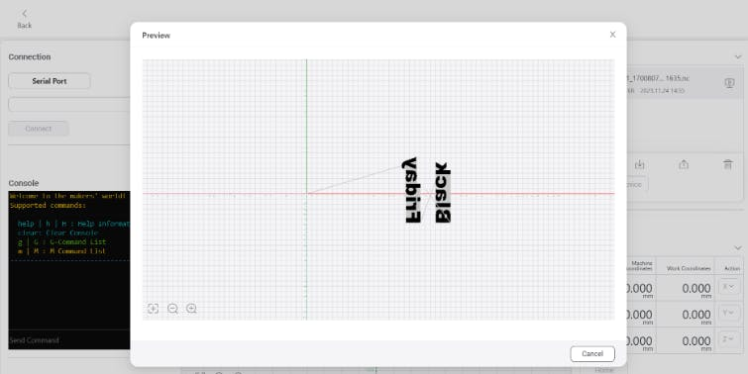
This article demonstrates that even individuals with limited knowledge of robotic arms can quickly learn to operate and create DIY projects. Within just ten minutes, one can design a unique pattern and carry out the engraving, making the process extremely convenient. Despite its compact size, the robotic arm's performance is sufficient for engraving applications.
Furthermore, the ultraArm P340 is equipped with high-precision stepper motors, enabling it to perform repetitive tasks in light 3C industries, such as assembly, quality inspection, and sorting. The multifunctionality and flexibility of the ultraArm make it a highly practical tool, suitable for a wide variety of application scenarios and needs.
Credits

Elephant Robotics
Elephant Robotics is a technology firm specializing in the design and production of robotics, development and applications of operating system and intelligent manufacturing services in industry, commerce, education, scientific research, home and etc.



















Leave your feedback...